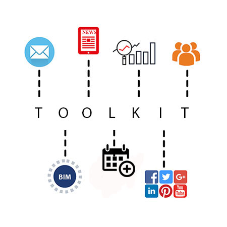There are a lot of interesting discussions happening at the moment around BIM as the industry moves towards reaching BIM Level 2 maturity before April 2016. Our first #BIM4M2chat with Steve Thompson, chair of BIM4M2, on 3rd February 2015 raised many great questions and comments from the product manufacturing community about how they are adopting BIM.
Why can’t BIM inform a supplier when their products have been specified?
A small manufacturing company approached me with their concern that, as a supplier, they rarely get to know when their products have been specified until the traditional old way of either receiving requests for tender information from contractors or sub-contractors, or following up on projects.
With BIM being promoted as a process that can improve efficiencies within the supply chain, I wanted to look at why this might be happening, and spoke to Steve in more detail about this issue.
The industry is focusing on working with product manufacturers to adopt BIM processes in time for April 2016, including providing the right information and delivering this content in the right way. It seems that looking at how we can improve efficiencies in the supply chain – including establishing a two-way flow of information – is the next stage.
Early manufacturer engagement
It makes sense that manufacturers want to know at an early stage what projects their products have been specified on so they can offer expert advice from the beginning, as well as looking to reduce the impact of lead times for a particular product, enabling them to schedule production and helping to improve internal processes.
We often talk about early contractor engagement, but is there also a need to focus on early manufacturer engagement to ensure the supply chain is receiving the right information at the right time?
Steve agreed that this is a real problem for product manufacturers. He said: “My concern is that engagement with manufacturers is too often seen as a one-way, not a two-way process. It is a real missed opportunity to make significant efficiencies through the supply chain.”
“There are short term solutions. In creating content we need to make sure manufacturers and the supply chain and specifiers work together, instead of throwing information over the fence and saying that we ‘do BIM’. We need to maintain the link between the manufacturing process and project (and product) delivery and operation."
Steve explains that often the best way to do this is for a product manufacturer to hold content on their own website, or issue it on request, so they know when their content is being used. Specifiers can also contact manufacturers directly from the model, which improves the speed of information transfer and ensures additional support can be given where required.
What is being done to address this issue in the long term?
Steve comments that “As for BIM4M2 and me personally, I see this as a significant issue that we are trying to address, but it is a slow process because many still see information exchange between product supplier and others as a one-way process. Product Data Templates support this approach, and it makes it easier to ensure the whole team is joined up, and manufacturers' information requirements can also be included in the templates.
Looking at the scale of the construction challenge ahead to meet the forecast global increase in urbanisation, we need to work together from product manufacture, right through the asset lifecycle if we are to succeed.’
Steve is also part of the Manufacturers Strategic BIM Forum, which is working with the Government to look at how manufacturers can benefit from BIM, and as such contribute to the Construction 2025 strategy. This provides further potential to address this issue.
It seems that in order to realise the full potential of BIM and improve supply chain efficiencies, the flow of information needs to be a two-way process – product manufacturers and suppliers providing the right information at the right time, and specifiers engaging with the manufacturer at an early stage to offer support and ensure the availability of a product. But this is only the beginning...
If you’d like to comment about this article, please follow this link to our LinkedIn post
Further Information
For more information about BIM4M2, please visit the website, where you can sign up to the newsletter from any page, or follow @BIM4M2 on Twitter.
You can also view full highlights of the #BIM4M2chat conversation on the BIM4M2 website here: #BIM4M2Chat – talking BIM with Product Manufacturers.
Related Blog Articles



![Communicating with specifiers & developing a personalised persona [EVENT] Communicating with specifiers & developing a personalised persona [EVENT]](/20/blogentry/00/04/48/th382.png)







![A strategy for communicating with specifiers [EVENT] A strategy for communicating with specifiers [EVENT]](/20/blogentry/00/03/82/th382.png)